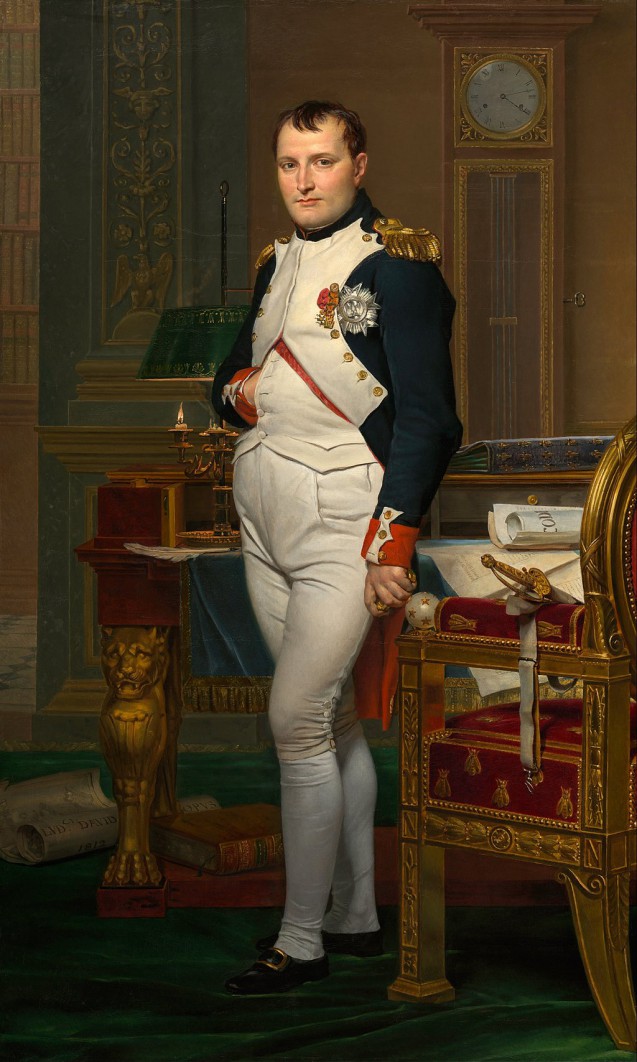Hundreds of contemporary representations of Napoleon exist, ranging from personal portraits to paintings in which he appears, miniatures, busts, statues, profiles on coins, … I could go on. That being said, very few of the artists of these works could boast that they ever actually got a sitting. The man who never stood still scorned such things as a waste of his time. It is said that in the preparations for Antoine-Jean Gros’s Bonaparte at the Arcole Bridge (1797), the artist had to get Josephine to take her husband on her knee and to hold him there while the painter did his sketches. Slightly later (1797-98), General Bonaparte agreed to sit for Jacques-Louis David for a few minutes for a portrait (unfinished). He also posed for David for the infamous Sacre painting (1808) and also for Napoleon in his study at the Tuileries (1812). But that artist was not as lucky with his Bonaparte crossing the Alps (1801), where he had to ask his son to stand in for the First Consul. Gérard and Isabey were probably the artists who had the most luck in getting Napoleon to stand for his portrait. The majority of the rest had to make do with sketching their subject during official audiences, theatre visits, or military reviews, the only occasions – it would appear – the guy finally stood still. And to make the portraits more “credible”, they would add the famous hat, the colonel of the Guard’s (either Chasseur or Grenadier) uniform, or the hand in the waistcoat, so as to make sure that the viewer “recognised” the Emperor, regardless of the complexity of the scene, whether battle, ceremonial or intimate.
There are several common physiognomical common denominators that can be extracted from all these representations, with their varied attempts at flattery and glorification, that would give what you could call an “average” Napoleon (if that isn’t a contradiction in terms): blue/grey eyes, aquiline nose, thin lips, pale complexion, thinning hair over time, gradually increasing waistline (systematically minimised by the artists, ahem…). His looks can also be identified in the written accounts of the time that note his piercing look, his severe bearing, and his seductive smile. The death mask, on the other hand, taken on St Helena, is not much help in this regard. Its general authenticity is contested: one part that was broken during the moulding process was reconstituted, and later copies were reworked.
Despite the fact that even with all these witnesses we’re still no closer to a “real” Napoleon, nevertheless, David’s paintings remain a head-and-shoulders above the rest, particularly the Napoleon in his study at the Tuileries. There, we see an Emperor calmly standing in front of his desk, clearly having worked all night, lit by torchlight. Two versions exist: one held at the National Gallery of Arts in Washington (USA), the other in the collection of the Princesse Napoléon (which will one day come into a French public collection since it is part of a dation or transfer in lieu of inheritance tax).
Discover David’s portrait of Napoleon in his study at the Tuileries
Jacques-Louis David’s Propaganda
The first images of Bonaparte in Britain


